Thulin X
What if...what if Enoch Thulin´s aeroplane factory got a licence to produce Fokker E.V after WW 1, for the Swedish Flying Corps/Air force? In my plastic factory anything is possible. I had an Eduard Fokker E.V in 1/48 sitting on my shelf for quite a while but I never came to building it. It just never interested me much and I almost sold it. But when IPMS Stockholm announced the theme for the 08 Open 2016 show, "1920s", I got a story and a model in my head. I started to flip through books and my decal collection and soon I had an idea of what to do.
I cut away the Fokkerish face of the cowling to change the appearance a bit, gave it a Swedish late 1920s camouflage and added decals to match. Some would say the build is easy due to lack of extra wings and bracing wires, but I must confess the final assembly was plain hell. All struts have to be glued at an exact angle and position, otherwise nothing else will be aligned or straight. So there it was sitting, all ready, but nothing happened for a month due to my total lack of confidence. In the end I decided to just go for it no matter what. I rather fail trying than not even trying at all. I´m quite happy with the result although there are a few things to improve. I learnt a lot for next project is all I can say.
I used Vallejo Model Air through the entire build. Wood was simultated by oils over Light Sand, cowling got a few coats of Vallejos new Metal Color Duraluminium, undersides are Vallejo Model Air Pale Blue, top sides are Vallejo Model Air Dark Earth, Light Sand and Gunship Green, fin and rudder are Vallejo Model Color Flat Yellow and a 50/50 mix of Dark Blue and Andrea Blue. The engine got a coat of Duraluminium and a slight wash with oils. Decals are from Flying colors excellent sheets, they just bed down beautifully and are a great inspiration to make more old Swedish aeroplanes.
Enoch Thulin manufactured copies of Bleriot monoplanes, Morane Saulnier and some others but mostly used his skill to create a line of aeroplanes of his own design. All of them got a letter designation, starting from A. In 1920 the company went out of business. Just think of what could have been produced if they managed to keep going a bit more.
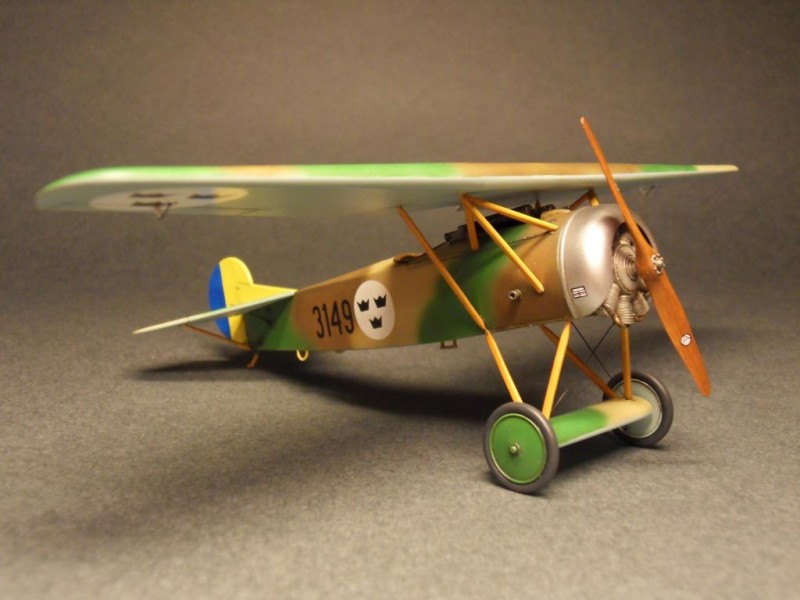

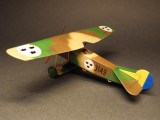


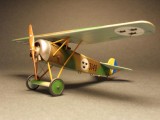
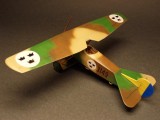
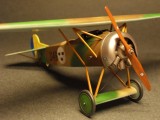

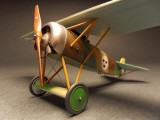

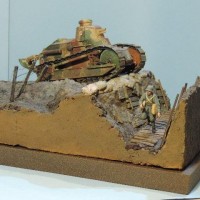

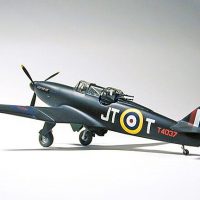
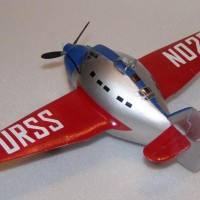
Looks really nice! Fun color and decal scheme, and the wood grain looks great. Nice job!
Thanks, Greg. Yes, I like the wood as its organic look breaks up the other colours.
Good work...good pics.
Thanks, Craig.
Stellan, entirely plausible. Herr Fokker loaded up a train full of D VIIs when the war ended, and took them back to Holland.
German firms copied Nieuports.
Also, whatever was left sitting around in the former occupied countries became the basis for a lot of postwar air forces.
Looks the part!
Hope they got the glue right...
Thanks, Bernard. The years just after WW 1 was a mess with countries making copies or using old crates for their air forces. Many also decomissioned lots of airplanes as there was no need for them...the "war to end all wars" had just ended and many countries hoped for an eternal peace. This was not to be, though. Sweden bought and manufactured a number of Phönix D.II for the post war era. There is one left at the Flygvapenmuseet in Linköping.
Beautiful job, my favorite WW I aircraft
Thanks. In a way it´s growing on me, quite elegant I must say.
Beautiful job, surprising.
Thanks, Christian. Surprising?
Really nice build of a what if.
I like it
Thanks, Vincent, glad you like it!
I did one of the same kit, but in German markings. I'd like to share it. Is submitting so many articles in such a short time out of line?
Have no idea about behaviour re time and article ratio, why not give it a few days more if you feel uncertain. Thanks for stopping by.
What a cracking looking model!
Wow, thanks, Rob! Will let it rest a bit, might need a bit more weathering.
Beautiful build and presentation !
Thank you, I´m pleased to hear.